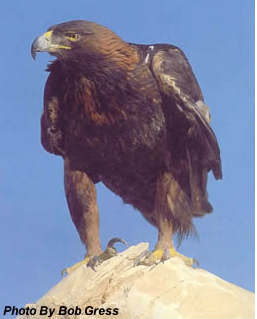Energy and Environment: Scotland Wind Farms Versus United States in Protecting Birds
BY JACK DINI – Plans for a controversial mega-wind farm on the Isle of Lewis were dropped following fears that golden eagles and other birds would be killed by massive turbine blades. Predictions indicated that up to 22 golden eagles, Scotland’s national bird of prey, could collide with the wind farm turbines over 25 years as well as potential harm to other sensitive species. (1)
In another case, The Royal Society for the Protection of Birds (RSPB) and the Scottish National Heritage (SNH) organizations withdrew objections to plans for a major wind farm on the Western Isles following the developers decision to reduce the number of turbines for the Stornoway Wind Farm from 42 to 36. RSPB Scotland had concerns that the 42 turbine projects would threaten golden eagle and red-throated diver habitats. SNH had similar worries. (2)
Now, let’s look at the United States.
California officials report an average of 67 golden eagles die each year at the Altamont Pass Wind Farm, located in Alameda County which contains the highest density of nesting golden eagles in the world. The turbines also kill more than 2,000 raptors, along with thousands of smaller birds and bats each year. (3)
The death toll of the Gulf of Mexico oil spill, called by some as ‘the worst environmental disaster in history,’ pales in comparison to the carnage wrought in the name of environmentalism. Nationally, the US Fish & Wildlife Service reports wind turbines kill 440,000 birds each year.
Of added interest is the fact that oil companies face heavy fines for killing many fewer birds, and several large power plants with merely the potential to harm threatened species were denied application by the California Energy Commissions. As Tom Tanton has noted, “Of course, those were conventional sources.” (3)
So, what’s the life of a bird worth? In Scotland, folks go to extremes to protect species. In the US, if you’re Big Oil, it can range from $7,000 to $20,000 per bird. If you’re wind energy, it cost nothing. (4)
References
- Alistair Munro, “Massive wind farm axed because it would kill 22 golden eagles,” Scotsman.com, August 9, 2012
- “Stornoway wind farm: RSPB and SNH withdraw objections,” BBCNews, June 21, 2012
- D. Brady Nelson, “California golden eagles threatened by wind turbines,” Environment & Climate News, 14, 14, September 2011
- Robert Bryce, “Bird kills” What bird kills?, Energy Tribune, September 11, 2009

